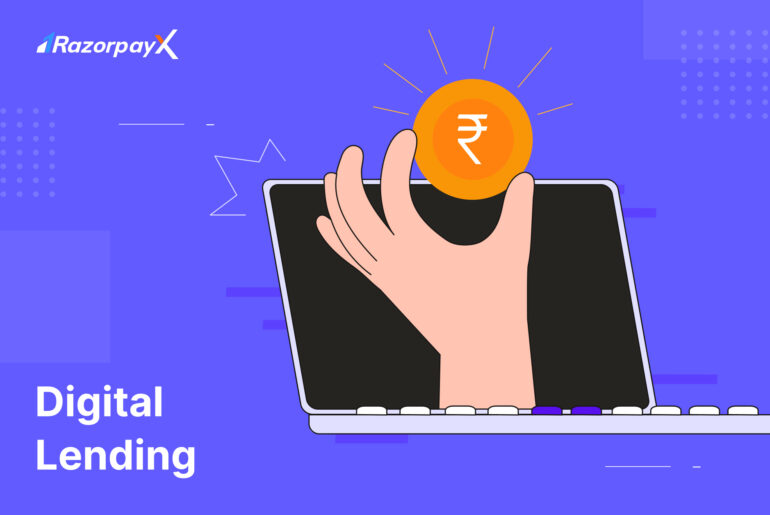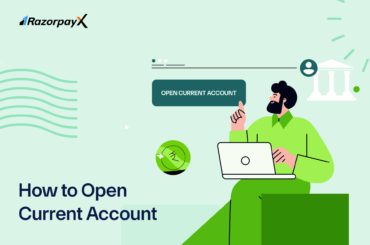Table of Contents
What is Digital Lending?
Digital lending is the process of providing credit through online platforms, bypassing traditional intermediaries like banks.
With digital lending platforms, it is now possible to get loans without traditional requirements like lengthy creditworthiness checks or extensive paperwork requirements.
Let’s explore how digital lending evolved in India and how it has revolutionized the lending and banking industry and benefited businesses and individuals alike.
Digital Lending in India
The digital lending sector in India has exploded in recent years, thanks to increased smartphone and internet accessibility, growing demand for credit and new tech.
Thanks to this growth, the digital lending industry in India is set to grow $515 billion by 2030. Flexible credit models like BNPL, P2P lending and co-lending are revolutionizing the way lending is seen in the banking industry.
With all this growth comes regulation. The RBI has taken a number of steps to regulate the digital lending industry – issuing guidelines for digital lending apps and platforms.
RBI Digital Lending Guidelines
The Reserve Bank of India (RBI) issued the Digital Lending Guidelines in November 2021 to regulate digital lending apps and platforms in India.
The guidelines are applicable to all regulated entities that offer digital lending services, including banks, non-banking financial companies (NBFCs), and peer-to-peer (P2P) lending platforms.
They aim at protecting customer data and privacy, ensuring reporting and due diligence and regulation of this fast-growing industry.
The guidelines establish two main players in the digital lending industry: Lending Service Providers (LSPs) and Digital Lending Apps (DLAs).
Overall, the RBI Digital Lending Guidelines represent a significant step towards regulating the digital lending industry in India. The guidelines are likely to have a positive impact on consumers, by helping to protect them from unfair lending practices. However, it remains to be seen how the guidelines will impact the growth of the digital lending industry.
How Does Digital Lending Work?
The traditional lending process is lengthy, and complex, and involves substantial paperwork and face-to-face interactions with banks or NBFCs. This process discouraged many people from getting loans.
Digital lending aims to streamline this entire process by making it completely online and automated.
The application process is completely online, where borrowers fill out and submit an online form, providing details like employment, source of income and others. Borrowers also have to provide minimal paperwork to allow for background checks and verification.
Approval is also mostly automated – advanced algorithms and machine learning models are employed to analyze the applicant’s data quickly. These algorithms evaluate creditworthiness and risk, determining whether the applicant qualifies for a loan and what specific terms like interest rates and loan amounts should be offered.
The disbursal process is also much more streamlined – unlike traditional lending, where the funds are disbursed only after a few days, digital lending platforms allow for instant fund disbursement. The entire process is very efficient, providing borrowers with timely access to the funds they need.
Repayment of the loan is also entirely online – the payments are typically managed through the digital lending platform. Some may even offer flexible repayment options to accommodate borrowers’ needs.
Benefits of Digital Lending
Digital lending is the future, and for good reason. Here are a few benefits of digital lending to individuals and businesses looking for credit.
Digital lending offers speed and convenience unprecedented in the financial services industry. Since the entire process is online, there’s no need to visit physical bank branches or wait in long queues or fill out lengthy forms and paperwork.
Individuals and businesses that may not have been able to apply for loans with traditional lenders can now access credit through digital lenders.
Another benefit is 24/7 accessibility. Borrowers can access digital lending platforms at any time, including outside of traditional banking hours. This flexibility makes it easier for people to apply for loans when it’s most convenient for them.
Digital lenders leverage advanced data analytics and machine learning to make lending decisions. This allows for more accurate risk assessment and can lead to fairer lending practices.
Digital Lending vs Traditional Lending
Digital lending is the newer counterpart of traditional lending. Let’s see how the two differ.
| Characteristic | Digital lending | Traditional lending |
| Convenience | More convenient. Borrowers can apply for loans online or through mobile apps, and the loan process can be completed entirely remotely. | Less convenient. Borrowers typically need to visit a branch in person to apply for a loan and complete the loan process. |
| Speed | Faster. Digital lenders can often process loan applications and disburse funds within hours or days. | Slower. Traditional lenders can take weeks or even months to process loan applications and disburse funds. |
| Interest rates and fees | Lower interest rates and fees. Digital lenders often have lower operating costs than traditional lenders, which allows them to offer lower interest rates and fees. | Higher interest rates and fees. Traditional lenders often have higher operating costs, which translates into higher interest rates and fees for borrowers. |
| Access | More accessible. Digital lenders are more likely to lend to underserved segments of the population, such as small businesses and micro-entrepreneurs. | Less accessible. Traditional lenders are less likely to lend to underserved segments of the population. |
| Creditworthiness assessment | Uses technology to assess creditworthiness, such as artificial intelligence (AI) and machine learning (ML). | Uses traditional methods to assess creditworthiness, such as credit reports and FICO scores. |
Challenges of Digital Lending
While digital lending has a number of advantages over traditional lending, it also faces a number of challenges. Some of the key challenges of digital lending include:
- Fraud and cyber security: Digital lending platforms are vulnerable to fraud and cyber-attacks. Lenders need to invest in robust security measures to protect customer data and prevent fraudulent loan applications.
- Risk assessment: Digital lenders often use alternative data sources to assess creditworthiness, such as social media data and mobile phone data. However, these data sources can be less reliable than traditional credit reports. Lenders need to develop sophisticated risk assessment models to mitigate the risk of defaults.
- Regulatory compliance: The digital lending industry is still relatively new and evolving rapidly. As a result, there is a lack of clear and comprehensive regulations in some jurisdictions. Lenders need to stay up-to-date with the latest regulations and ensure that their practices are compliant.
- Customer education: Many borrowers are not familiar with digital lending platforms or how they work. Lenders need to educate borrowers about the process and the risks involved before they apply for a loan.
In addition to these challenges, digital lenders also face competition from traditional lenders and other fintech companies. To succeed, digital lenders need to offer a differentiated product or service and provide a superior customer experience.
Despite the challenges, the digital lending industry is expected to grow significantly in the coming years. Lenders that are able to overcome these challenges will be well-positioned to capitalize on this growth.
Learn More about Digital Lending
Read more:
FAQs
What is an example of digital lending?
A person can apply for a personal loan online through a digital lending platform. A small business can apply for a working capital loan through a mobile app. A consumer can buy a product on an e-commerce website and pay for it in instalments using a buy-now-pay-later (BNPL) service.
Is digital lending legal in India?
Yes, digital lending is legal in India. However, the Reserve Bank of India (RBI) has issued guidelines to regulate the digital lending industry. These guidelines are aimed at protecting consumers from predatory lending practices.
How does digital lending work in India?
The borrower applies for a loan online or through a mobile app. The lender assesses the borrower's creditworthiness using a variety of data sources, including traditional credit reports and alternative data sources such as social media data and mobile phone data. If the borrower is approved for the loan, the lender disburses the funds into the borrower's bank account. The borrower repays the loan in instalments, typically over a period of 12 to 36 months.
Is digital lending safe?
Digital lending can be safe, but it is important to choose a reputable lender. Borrowers should research any lender before applying for a loan and should only borrow what they can afford to repay.





